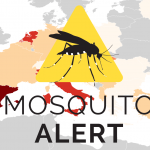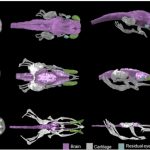Latest posts
From Frictionless Data to Interactive Visualisation
Scott Edmunds - September 1, 2022

A guest post from our summer data science intern Raniere Silva from Hong Kong City Uiniversity on his work on Frictionless Data and Interactive Visualisation
Not all species are equal: Using the h-index to quantify taxonomic bias (author Q&A)
Hans Zauner - August 16, 2022

The h-index is a metric that was invented to summarise the publication output and impact of researchers. In a new GigaScience article, authors from the University of New South Wales (Australia) adopt the controversial metric to explore systematic differences in research interest (taxonomic bias), using mammals as an example.
Open Science Milestones and the return of in-person meetings at ISMB2022
Scott Edmunds - July 19, 2022

Write-up of GigaScience’s 10th birthday at ISMB2022 in Wisconsin, birthday series of papers, and it’s efforts to map to the UNESCO Open Science Recommendations
GigaByte a finalist for the ALPSP Awards for Innovation in Publishing 2022
Scott Edmunds - July 4, 2022

We are pleased to announce GigaByte journal has been shortlisted as a finalist in the 2022 ALPSP (Association of Learned and Professional Society Publishers) Awards for Innovation in Publishing.
GigaScience at SPNHC 2022
Chris Armit - June 27, 2022

Write up of the meeting of the Society for the Preservation of Natural History Collections (SPNHC 2022) by Chris Armit.
GigaByte helping the fight against Vector-Borne diseases with data
Scott Edmunds - June 14, 2022

New GigaByte series of vector-borne diseases data papers just out, including mosquitoes, sandflies, ticks, and kissing bugs, supported by GBIF and the WHO
Publishing Citizen Science data to fight against mosquito borne diseases
Scott Edmunds - May 31, 2022

Citizen Scientists share and publish Mosquito Alert data as part of our GigaByte (& GBIF & TDR supported) series on vector-borne diseases.
Waking Up Publishing with Interactive Coffee Data
Scott Edmunds - April 21, 2022

Author Q&A with Julien Wist talking about his interactive coffee dataset just published in GigaByte that features a NMRium browser.
GigaScience at VIZBI 2022
Chris Armit - April 7, 2022

Write-up of the The 12th international meeting on Visualizing Biological Data (VIZBI) conference
3D imaging of the proteus, a mysterious cave-dwelling salamander
Hans Zauner - April 6, 2022

Newly published high-resolution images of the head of the blind salamander Proteus anguinus reveal adaptations for life in the dark.